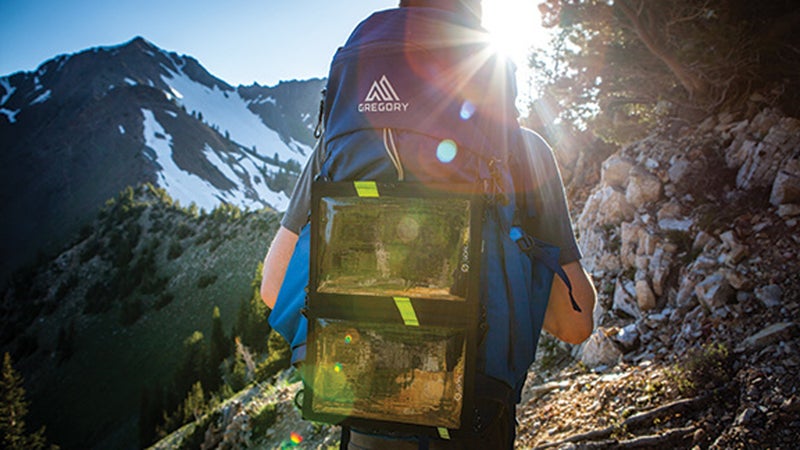In theory, we love the flexibility of solar-powered gadgets in the field.聽Using the sun to recharge聽your mobile, Spot, Garmin, or Magellan for its GPS could even save your life in an emergency.聽
But in practice, solar panels sewn into apparel (a trend we鈥檙e seeing develop in the outdoor industry)聽rarely work like this. For one, flexible squares stitched into a jacket need to face the sun throughout the entire day to generate enough usable power, which is only feasible if you plan on wearing your jacket outside, under the sun,聽from morning 'till聽night.聽And because the panels are permanently stitched into the fabric, they lose their versatility. Forget about leaving the panel at base camp to charge while you hike.
noticed this issue, and decided to partner with , , and to build hardgoods with built-in removable solar panels. The products, including packs and kayaks, come with fixed attachment points designed to accommodate panels of multiple sizes with integrated batteries, says James Atkin, director of marketing at Goal Zero.
Consumers buy pre-measured panels that can be secured quickly and easily, or removed and set up as needed in camp. That also means the small generators aren't limited to backcountry travel: you can, say, use them to charge a GoPro in the parking lot before hitting the slopes or set them up in your backyard.聽

The partnership with聽, also seems like a smart one.聽Car camping typically involves setting up your base camp聽and making forays from there. Because a rooftop tent has a massive surface area, the Treeline system can integrate with the , which puts out enough juice to recharge a laptop.聽
The idea is to discourage people from running their car to charge their GPS or聽phone, says Atkin. The聽larger mission of Goal Zero鈥檚 partnerships is聽鈥渢o make a lot more of our lives truly plug-and-play with solar,” he says.聽Although the company can鈥檛 talk about future partnerships just yet, Atkin says the company has plans to move聽beyond the hike-and-trail space in the future.聽


